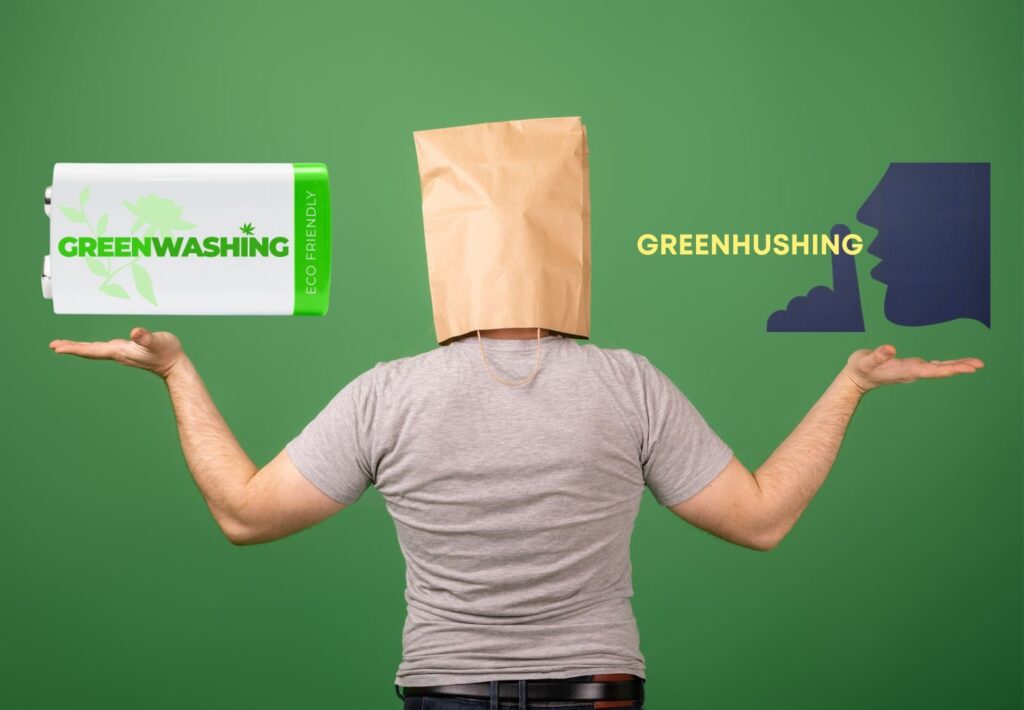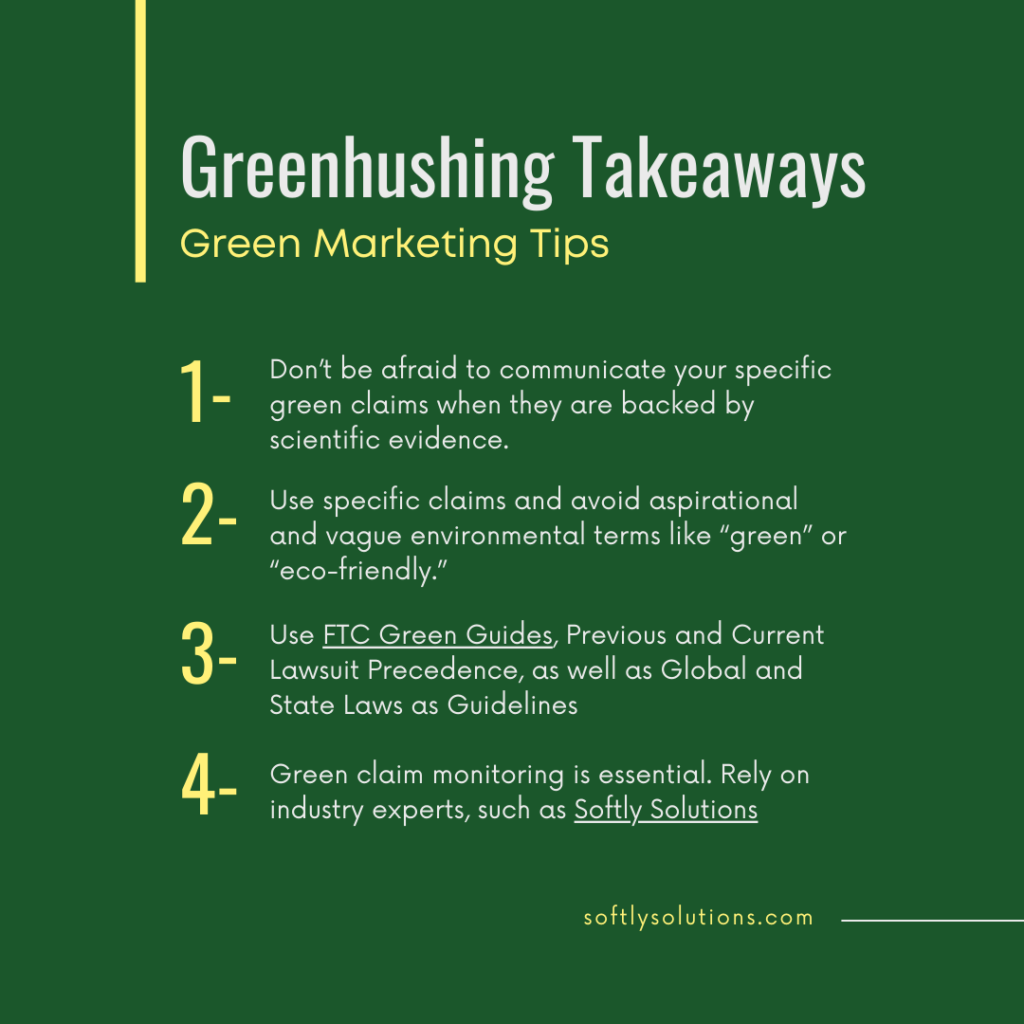Is Eco-Friendly Marketing Worth the Risk?
Today’s consumers are more environmentally conscious than ever, and the term “greenwashing” has become a hot topic. This misleading practice of making false green claims has left many buyers skeptical of products touted as eco-friendly. Now, a trend called “greenhushing” is emerging, where companies shy away from promoting their sustainability efforts for fear of being accused of greenwashing. However, staying silent about your eco-friendly practices is not the solution – consumers crave transparency! As leaders in business, it’s crucial to understand why open communication about sustainability initiatives is essential for building trust and credibility.
Why Companies Practice Greenhushing and How to Overcome It
Greenhushing is on the rise as companies try to navigate the legal landscape surrounding greenwashing. Research from the South Pole found that 25% of companies setting science-based net zero targets will not publicize them. While the obvious reason why companies practice greenhushing is due to legal risk, there are other reasons as well.
To avoid greenwashing accusations or fines:
Because keeping up with evolving regulations and case law is difficult, companies often refrain from sharing their sustainability initiatives to avoid greenwashing accusations or regulatory fines.
We know it’s not easy, but the only way to understand what constitutes greenwashing is to fully understand all guidelines, regulations, and case law surrounding the marketing claim you wish to make. Fortunately, there are tools, like Softly Solutions’ ChatESG, to get you started! The company also has a suite of products purposely designed to help you navigate green marketing and avoid greenwashing.
If you attempt to figure this out on your own, it’s best to start with The FTC Green Guides for guidance and examples to avoid greenwashing pitfalls. Even if you aren’t marketing internationally, you can get additional guidance from Canada’s Competition Bureau, the UK’s Competition and Markets Authority’s (CMA) Green Claims Code, and the European Union’s Directive on Green Claims.
Consumer mistrust:
A Greenprint study found a majority of consumers mistrust environmental claims, with 53% of American consumers rarely believing such claims. And consumers aren’t wrong. It’s estimated that over 50% of green claims are, in fact, considered misleading or noncompliant with regulations.
How you present your claims is important. Vague terms are not trustworthy. Be transparent and qualify your green claims to maintain trust. If you’re making an environmental claim, back it up with evidence. You can validate your claim by using third-party certifications.
Consumer perception:
There is the perception that consumers might view an environmentally friendly product as being of lesser quality, believing that a sustainable product can’t be effective. In the World Economic Forum, we learned from Jason Jay, director of the Sustainability Initiative at MIT Sloan, that these undesirable trade-offs can lead to greenwashing.
According to the Harvard Business Review, highlighting other positive attributes of a product, such as innovativeness, novelty, and safety, is one way to counteract negative associations of green products.

The Case Against Greenhushing
Whatever the reason, the correct response to greenwashing allegations is not greenhushing. Recent lawsuits illustrate how companies can modify their approach to communicating their environmental claims to ensure greater transparency.
Burt’s Bees
Burt’s Bees is currently facing a class action lawsuit (Bruno et al. v. Burt’s Bees, Inc.) that alleges its 100% natural labeling on lip care products is inaccurate. The lawsuit claims that the process of hydrogenation turns natural oils into synthetic ingredients, making the products less than 100% natural despite Burt’s Bees’ use of all-natural ingredients. Read more from Softly on this case and other all-natural claims here.
This case is still pending, but Burt’s Bees should not resort to greenhushing as a result of this litigation. By following FTC Green Guides and clearly stating qualifying terms on its label, such as “contains natural ingredients” or “derived from natural ingredients,” it can communicate its commitment to natural ingredients without greenwashing.
Colgate-Palmolive
Colgate is not backing down from the numerous class action lawsuits and an FTC complaint alleging deceptive recyclability (read more from Softly on the Della v. Colgate-Palmolive case and other recyclability claims here). The complaints claim that despite Colgate’s toothpaste tubes being made of recyclable materials, recycling facilities do not accept the redesigned tubes made of recyclable HDPE #2 plastic. This is because the facilities are unable to differentiate them from traditional tubes made of layers of unrecyclable plastic and aluminum. As a result, the tubes are effectively not being recycled.
In a significant and forward-thinking step, Colgate has announced that it is making its recyclable tube design available to other companies. Colgate hopes that by facilitating the widespread adoption of recyclable tubes by all companies, the recycling facilities will also take the necessary steps to recycle them effectively. This initiative demonstrates Colgate’s commitment to sustainable practices and addressing environmental concerns within the industry.

When is the Best Time to Share your Green Goals?
Now is the best time to communicate your environmental claims. The more companies talk about what they are doing for the environment, the better it is for everyone. Softly can help you make your green claims with confidence by providing regulatory information, case law, and competitive information regarding green marketing claims in one place. By being transparent and communicating your green practices, you can raise awareness as you raise the bar for sustainability standards.
Moving Forward
If everyone hides their sustainability efforts, no matter what the reason, we can’t move forward toward the goal of a greener tomorrow. Consumers won’t know where to find the green products they want, companies can’t learn from each other, and there is no industry collaboration. You can benefit the environment, consumers, and your bottom line by being transparent in your green efforts and communicating with your customers.
References
2. What is ‘greenhushing’ and is it really a cause for concern? | World Economic Forum
